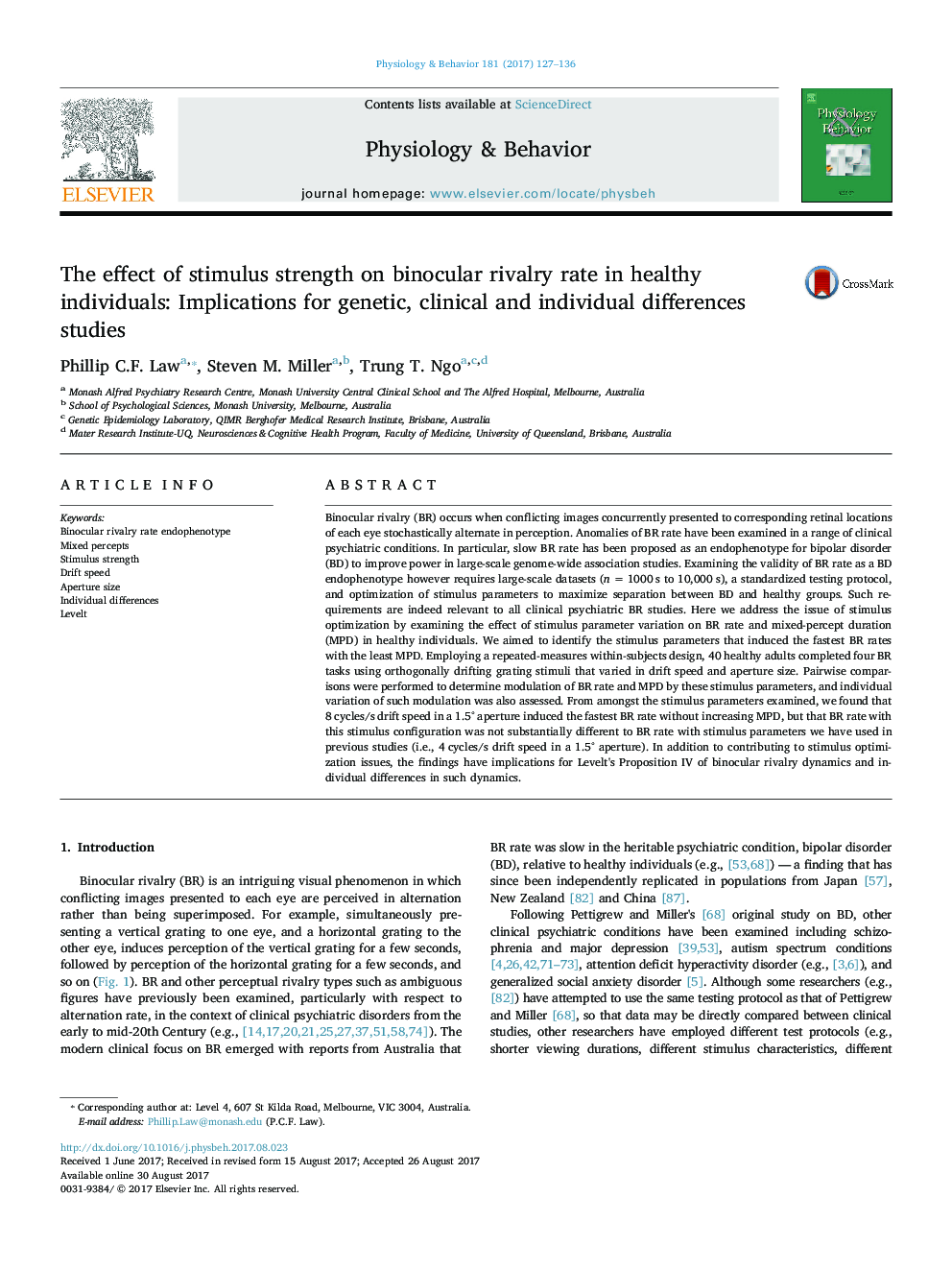| کد مقاله | کد نشریه | سال انتشار | مقاله انگلیسی | نسخه تمام متن |
|---|---|---|---|---|
| 5593585 | 1571138 | 2017 | 10 صفحه PDF | دانلود رایگان |
Highlight
- Binocular rivalry (BR) stimuli of 8 cycles/s velocity, 1.5° size induced the fastest BR rate with low mixed percept duration.
- This stimulus configuration nonetheless induced BR rate similar to previously well-studied stimuli drifting at 4 cycles/s.
- In line with Levelt's Proposition IV, increasing velocity from 4 to 8 cycles/s induced a faster BR rate in most subjects.
- However, the individual variation observation in BR modulation dynamics underscores the value of attending to individual differences in BR studies.
Binocular rivalry (BR) occurs when conflicting images concurrently presented to corresponding retinal locations of each eye stochastically alternate in perception. Anomalies of BR rate have been examined in a range of clinical psychiatric conditions. In particular, slow BR rate has been proposed as an endophenotype for bipolar disorder (BD) to improve power in large-scale genome-wide association studies. Examining the validity of BR rate as a BD endophenotype however requires large-scale datasets (n = 1000 s to 10,000 s), a standardized testing protocol, and optimization of stimulus parameters to maximize separation between BD and healthy groups. Such requirements are indeed relevant to all clinical psychiatric BR studies. Here we address the issue of stimulus optimization by examining the effect of stimulus parameter variation on BR rate and mixed-percept duration (MPD) in healthy individuals. We aimed to identify the stimulus parameters that induced the fastest BR rates with the least MPD. Employing a repeated-measures within-subjects design, 40 healthy adults completed four BR tasks using orthogonally drifting grating stimuli that varied in drift speed and aperture size. Pairwise comparisons were performed to determine modulation of BR rate and MPD by these stimulus parameters, and individual variation of such modulation was also assessed. From amongst the stimulus parameters examined, we found that 8 cycles/s drift speed in a 1.5° aperture induced the fastest BR rate without increasing MPD, but that BR rate with this stimulus configuration was not substantially different to BR rate with stimulus parameters we have used in previous studies (i.e., 4 cycles/s drift speed in a 1.5° aperture). In addition to contributing to stimulus optimization issues, the findings have implications for Levelt's Proposition IV of binocular rivalry dynamics and individual differences in such dynamics.
Journal: Physiology & Behavior - Volume 181, 1 November 2017, Pages 127-136
